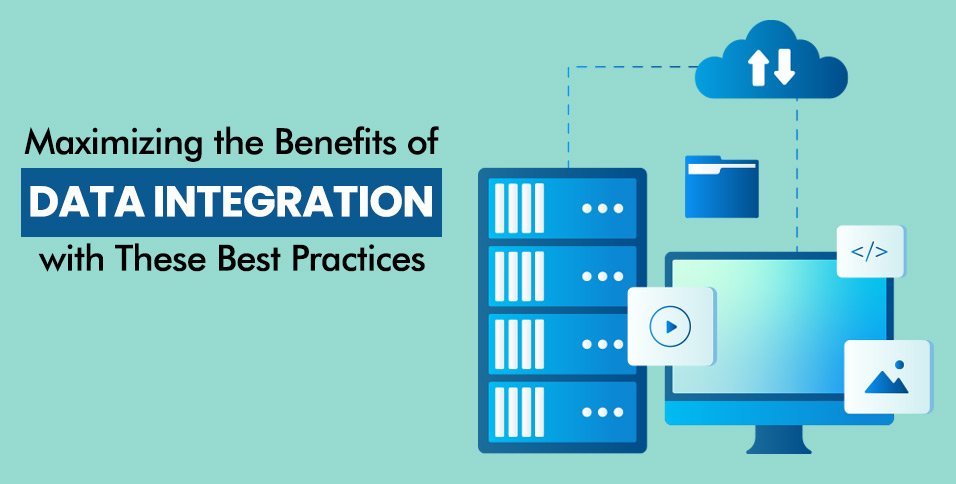Data integration is an essential part of any modern business. It involves the combining of data from different sources into one unified source, allowing for better organization and utilization. By taking advantage of data integration, businesses can gain a number of benefits, such as improved efficiency, cost savings, enhanced accuracy, and increased visibility. However, it is important to understand that data integration isn’t always easy. In order to maximize its benefits, organizations need to follow certain best practices. Here are some key tips to help you get the most out of your data integration efforts:
Establish Clear Goals & Objectives
Before beginning any data integration project, it is important to have a clear set of goals and objectives in place. This will ensure all stakeholders involved in the process are on the same page and working towards a common goal. It will also help you prioritize tasks and stay focused on what matters most for your organization’s success. Setting measurable goals can also be beneficial so you can track progress over time and make necessary adjustments along the way if needed.
Choose The Right Technology Platform
When choosing a technology platform for your data integration efforts, it is important to take into account certain factors. The factors are such as scalability, security, compatibility with existing systems, ease-of-use for users and administrators, cost-effectiveness, flexibility, reliability & availability. Also, consider whether this particular platform helps meet current needs while leaving room for future growth & expansion plans within the organization. One such organization that has included several benefits in its business integration programs is Adeptia.com. The organization provides a suite of tools that enable businesses to streamline their processes and increase efficiency.
Understand Your Data Sources & Formats
For successful data integration projects to happen, understanding existing sources & formats used by each source must be done first. This must be done before the actual implementation work starts. This includes things like knowing which databases hold relevant information (SQL Server / Oracle / Access), how structured they are (tables vs. flat files), what kind of format they use (XML / CSV / JSON), and their respective schema definitions. Understanding these details upfront will ultimately save time & effort during the actual implementation phase since there would be no surprises when trying to map two different sources together.
Implement Robust Security Measures
Data security should always be the top priority when dealing with sensitive customer information or proprietary company documents/records – especially given how much value organizations place upon them today. To ensure maximum safety, robust security measures should be implemented at both the hardware level (firewalls + antivirus programs) as well software level (encryption algorithms + access control lists). Additionally, regular audits should occur so potential vulnerabilities identified can quickly be patched up before attackers have a chance to exploit them successfully, thus compromising the entire system’s integrity!
Regularly Monitor Performance Levels
Once the initial setup is complete, a regular monitoring performance level is expected from the system as it becomes a critical factor in ensuring the long-term success of the project overall! Depending on the type of architecture chosen, various tools available help monitor metrics such as throughput rates, latency times, response times, memory usage, CPU utilization, disk storage, and others. This allows administrators to spot potential problems early before they cause major disruption operations down the road. On the other hand, Disaster recovery or DR building is one of the core benefits of using data integration services. Through DR building, organizations are able to support the entire business operation after an adverse event. DR building is imperative for retaining smooth operations in your company.
Test Before Going Live
Lastly, the whole process involves testing a solution before integrating it into the main operational system. During this stage, test cases should be created using sample datasets similar to the ones being used in real-world scenarios. The test results help in understanding whether the integration results will be successful or not in real scenarios. In case the test fails, appropriate changes are required until the desired outcome is achieved. This element of data integration helps to save time, costs, and costly failures, which clients might on accept when the project is live.
Conclusion
Data integration requires careful planning and preparation to achieve desired results efficiently and effectively. Following the best practices outlined above helps to minimize risks associated with processes and increase chances of successful implementation while maximizing benefits of it. Ultimately, through trial and error, combined hard work and dedication of team members involved in the project could help in reaching the desired goal.
Also Read: How to Manage Data Lakes and Unstructured Data in Your Organization
















